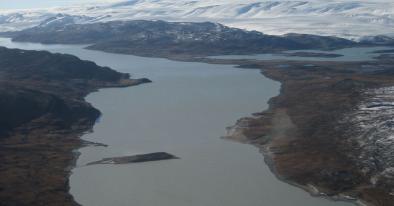Science Source
Interruption of two decades of Jakobshavn Isbrae acceleration and thinning as regional ocean cools
- States that Jakobshavn Isbrae has been the single largest source of mass loss from the Greenland Ice Sheet over the last 20 years
- During that time, it has been retreating, accelerating and thinning. Here we use airborne altimetry and satellite imagery to show that since 2016 Jakobshavn has been re-advancing, slowing and thickening
- Links these changes to concurrent cooling of ocean waters in Disko Bay's upper 250 m, which have cooled to levels not seen since the mid 1980s and spill over into Ilulissat Icefjord
- Concludes that projections of Jakobshavn’s future contribution to sea-level rise that are based on glacier geometry are insufficient, and that accounting for external forcing is indispensable
Related Content
Science Source
| Geophysical Research Letters
Ice Core Records of West Greenland Melt and Climate Forcing
K. A. Graeter, E. C. Osterberg, D. G. Ferris et al
Science Source
| Science Advances
Abrupt shift in the observed runoff from the southwestern Greenland ice sheet
Andreas P. Ahlstrøm, Dorthe Petersen, Peter L. Langen et al
Headline

Dec 15, 2017 | Vox
Greenland's ice sheet is driving global sea level rise. One section is melting 80% faster.
Science Source
| Science Advances
Should coastal planners have concern over where land ice is melting?
Eric Larour, Erik R. Ivins, Surendra Adhikari


